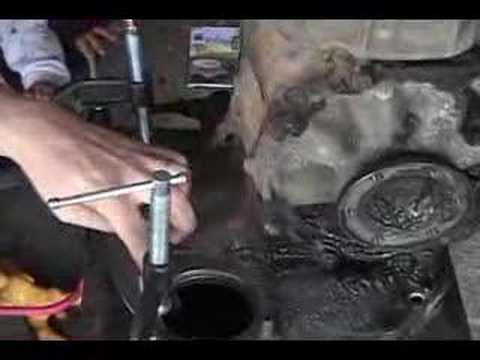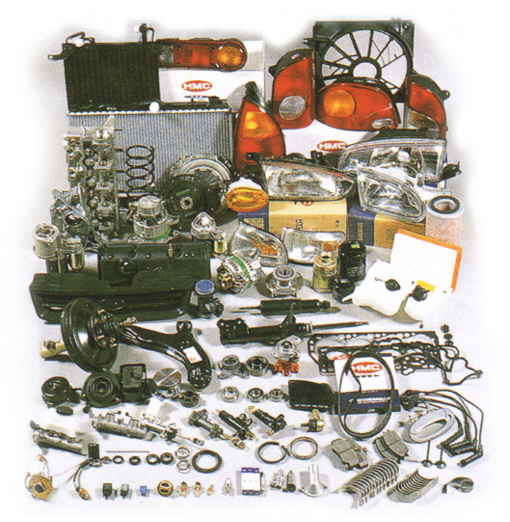#Suppliers
EIB Says No To Antonov. Suppliers Say No Scrooge McDuck Will Save Saab
Now that it has been first leaked then confirmed that the European Investment Bank EIB will not let Russian financier Vladimir Antonov get close to Saab, Antonov says he had known that all along.
Antonov’s spokesman Lars Carlstrom told Reuters that his boss “has known for a few weeks that the EIB would not let him invest in the iconic Swedish car firm,” Reuters reports. That revelation should come as another blow to Saab’s crumbling bastion of enthusiasm, Saabsunited, which had reported just yesterday that “Antonov is trying to save the situation.”
With the troops left dazed and demoralized, the generals practice the ancient art of finger pointing.
Saab: Collections Comes Calling "In A Few Days," Can Antonov Save The Day?
Over the weekend we told you Saab-watchers to “expect a run on the bankruptcy court in the coming days and weeks,” and according to Bloomberg the process has already begun. Christina Lindberg of the Swedish Debt Enforcement Agency tells the news service that eight suppliers have requested that their portion of the 104 debts registered with the agency be collected and that
We will start the collection process in a few days.
The good news? A previous request to place a Saab subsidiary in bankruptcy has been revoked as the supplier in question there was paid off. Now, however, with eight more debts going to collections (worth an undisclosed amount, we know that one debt alone is worth around $70m and estimates put the total at around $1b), the situation has become dire once again. The answer? Vladimir Antonov, of course! Thelocal.se reports that suppliers are pushing for the EIB to approve Antonov’s ownership stake, seeing the Russian as the only way out of the situation. And because the EIB will clearly never approve Antonov, another report that’s just breaking now says that Saab is seeking to “replace” the EIB loan in order to bring Antonov on board. The looming question: who on earth is going to lend this bleeding-out corpse of a company $350m? Does Antonov even have a billion to spare for his pet project? Needless to say, nobody has the faintest clue… they just know it has to happen. Yikes!
Saab Subsidiary Narrowly Avoids Bankruptcy As Suppliers Lose Faith
One of Saab’s suppliers, SwePart Verktyg AB, asked a Swedish court to declare a key Saab subsidiary, Saab Automobile Tools, bankrupt today reports Automotive News [sub]. Saab Tools owed about $935,000 to SwePart for tooling, and according to the supplier
More than one week has passed from the summons and payment has not yet been made. Saab Automobile should therefore be considered insolvent… We don’t want them to go into bankruptcy, I wish you understand that, that would be horrible, but we are a small company and for us that is a lot of money
Saab Tools was created to guarantee EIB loans for tooling, so had the “subsidiary” been declared insolvent, the whole ship would have gone down. But before a judge could act, Saab somehow managed to put out the fire, as a company press release proclaims
Swedish Automobile N.V. confirms that Saab Automobile Tools AB reached agreement on payment terms with the supplier that filed for bankruptcy, thereby resolving the issue.
Once again, Saab pulls the fat from the fire at the last minute… but the clouds are dark and rolling in fast. Many suppliers are still looking for money, Saab Automobile has 104 claims pending against it, and SwePart’s bankruptcy request won’t be formally withdrawn until Monday. And with the Swedish government and EIB seemingly unwilling to lift a finger to help, even the faithful are losing hope. This feels like the beginning of the end of the end…
Fisker: With An EV Transmission, All Things Are Possible
Are You Ready For: Plastic Windows?
As automakers face slowly diminishing returns in their attempts to make internal combustion engines more efficient (while facing huge challenges in electric, hydrogen and other alt-fuel drivetrains), they are looking ever more closely at alternative materials to improve efficiency (and, to a lesser extent, driving pleasure) through weight-savings. Perhaps the biggest emerging trend in this area, especially at the higher end of the market, is in the use of carbon fiber, which is being actively pursued by automakers like BMW, Toyota, Lamborghini and Daimler. But, as WardsAuto points out, there’s another material that’s trying to earn a place in the lightweight cars of tomorrow: polycarbonate plastics.
Polycarbonate windows weigh half as much as glass, and because they are made with injection molding they can come in shapes that can’t be imagined with glass.
However, the material is more expensive. To get auto makers to convert, Sabic and its main material competitor, Bayer MaterialScience, have to sell the idea of integrating other parts into the plastic mold that makes the window.
For example, says Umamaheswara, “on a liftgate, a lot of features can be integrated, and if the manufacturer is short of room in the factory, it can be delivered as a module.”
A modular liftgate could include the window, cladding for the D-pillar, a roof spoiler, the high-mounted rear brake light, a rear wiper foot, handles and logos. When all those processing costs are included, he says, polycarbonate is competitive with glass and metal.
Who Wants In On The 2013 Viper? Anyone? Bueller?
With a new Viper being readied for a 2012 auto show debut ahead of a 2013 launch, Automotive News [sub]’s Rick Kranz has discovered something of an issue in the development process: suppliers don’t want in.
Ralph Gilles, who heads Chrysler Group’s design organization and SRT, the automaker’s performance group, says many suppliers said “thanks, but no thanks” when the automaker knocked on their doors.
“It has been tough to get low-volume suppliers,” Gilles says. “We have had a few hiccups here and there as we get suppliers. That type of fringe business has really dwindled. A lot of people are looking for big accounts now, but now that is behind us.”
Kranz blames low volume (2,103 units in its best year, 392 units last year) and supplier consolidation for the “hiccups.” But as it so happens, this has been a recurring problem for the Viper since day one…
Orion Labor Issues Resurface As Union Takes Strike Vote [UPDATE: Strike Authorized]
[UPDATE: Automotive News [sub] reports that Linc workers voted “overwhelmingly” to authorize a strike, noting
With the strike authorization, the local can send notice to LINC that workers could strike after five business days if progress isn’t made toward a contract.
Ninety-eight percent of the 88 workers who voted yesterday agreed to authorize a strike, a representative at the union hall said this morning.
We’ve been watching the drama at GM’s Lake Orion plant unfold for some time now, as an “ innovative labor practices” agreement between the UAW, GM and the government has already drawn UAW protests and NLRB complaints, as well as increased backlash against the union’s two-tier wage structure. Thus far GM had been able to prevent Tier One workers from being forced into the second tier, by shuffling them off to the Flint HD pickup plant. But with GM’s truck inventory soaring to “Old GM” levels, Flint is being idled, and those “Tier One Gypsies” are once again facing the choice between moving to some other plant or accepting a 50% paycut to return to Orion. And now, another labor issue is raising its ugly head, as Crainsdetroit reports that
About 125 workers for a critical supplier [Linc Logistics] inside the General Motors Co. Orion Assembly Plant are taking a strike authorization vote today as a means of accelerating contract talks.
Dark Days In Trollhttan: Foreign Suppliers Ready To Pull The Plug On Saab
Foreign suppliers could produce the final nail in the coffin of struggling Saab, the head of a European supplier association fears. “I think that the patience has more or less run out,” Lars Holmqvist, CEO of CLEPA, the European Association of Automotive Suppliers, said to Swedish news agency TT [via The Local]
Foreign suppliers “probably have less feeling for Saab than many Swedish companies which have grown up with Saab in a different way. Many also have a personal connection to Saab because they might have driven one at some point in their life. But the foreign suppliers are tougher,” Holmqvist, himself a Swede, told TT.
Japan's Government Wants Standardized Autoparts
When I stopped working for Volkswagen in 2005, they had some 400,000 parts, or “numbers” as they are called in industry parlance, in their central warehouse in Kassel. With each car, the number climbed higher. On the other hand, some 5 percent were usually out of stock. The launch of each car caused raw nerves in the parts department. When a part was faulty, dealers and production manager were at war for parts. The production managers usually won, and blamed the dealers for shoddy service.
It’s tough enough to keep the hungry beasts at assembly lines and in workshops supplied with parts during peacetime. If a volcano over Iceland blows ash, or if a huge tsunami wipes out a good deal of Japan, it turns into parts paranoia. Now, Japan’s formerly powerful METI, the Ministry of Economy, Trade and Industry, is using the Tohoku disaster to force the Japanese car industry to standardize a lot of the parts it uses.
Saab Shuts Down Again, Situation "Tense," No End In Sight
Saab was supposed to reach 100% production speed sometime in the middle of last week after enduring a nearly two-month shutdown. But now it seems that more “material shortages” have brought the Trollhättan plant to its knees again, as Steve Wade of inside.saab.com reports
Yesterday, production at Saab Automobile stopped at lunchtime due to material shortages. We have now stopped again today for the same reasons…
The liquidity situation is still tense, and depends on several different financing solutions falling into place, long-term as well as short-term. Some milestones have been achieved, such as the letter of intent signed with Pang Da and the additional funding that their order of Saab cars means. An example of things that still await a solution is the sale and leaseback of Saab AB Property, which we have addressed in previous communications. Representatives from Spyker and Saab will continue to work with these solutions, while the dialogue between Saab and suppliers progresses.
UN: Recycling Rates For Key Green Car Elements Below 1%
A report by UNEP [ PDF here], the UN’s environmental body, finds that recycling rates for some of the key ingredients in EV and Hybrid cars are woefully low. The chart above shows “functional recycling rates” for 60 metals, and the rate for such key elements in the production of EV and Hybrid batteries and magnets as Lithium, Vanadium, Lanthanum, Neodymium, Dysprosium, all have recycling rates of 1% or lower. Not only do many of these elements have the potential for creating ecological damage, but many (especially the so-called “rare earth elements”) are considered relatively scarce…. and not recycling exacerbates both of these issues. But, notes the report, the complex fusion of elements used in both batteries and EV magnets could present huge challenges in ever improving these rates of recycling.
Where relatively high EOL-RR [End Of Life Rates of Recycling] are derived, the impression might be given that the metals in question are being used more efficiently than those with lower rates. In reality, rates tend to reflect the degree to which materials are used in large amounts in easily recoverable applications (e. g., lead in batteries, steel in auto- mobiles), or where high value is present (e. g., gold in electronics). In contrast, where materials are used in small quantities in complex products (e. g., tantalum in electronics), or where the economic value is at present not very high, recycling is technically much more challenging.
Hat Tip: Auto123
The Truth About "America's" Small Car Comeback
With new compact and subcompact models from Ford and GM enjoying respectable sales, the mainstream media has been indulging in some “feel-good” headlines, like the New York Times’s Detroit’s Rebound Is Built on Smaller Cars, or CBS’s more equivocal Can small cars rebound U.S. auto industry? It’s an understandable instinct, as the media has long battered Detroit’s inability to build competitive compact and subcompact cars, and in the post-bailout atmosphere of redemption, these headlines definitely help reassure Americans about the value of their “investment.” Unfortunately (if unsurprisingly), however, these pieces gloss over the full truth of the situation. Yes, Ford and GM are enjoying improved sales success with small cars. The “U.S. auto industry,” on the other hand, isn’t actually getting all that much out of the situation, beyond some fluffily positive press. Here’s why:
Quote Of The Day: Escape From Trollhttan Edition
Saab Has Enough Money For Muller's Bonus, But Does It Have Enough To Restart Production?
Saab has received wire transfers of around €30m from both Gemini Investments and the Chinese dealer group PangDa, reports Aftonbladet, and it will be using that money to pay off its supplier debts which could use up most of that cash (Saab’s supplier debts are estimated by DI.se at between two hundred and four hundred million kroner, or as much as €44m). Leaving aside the issue of how that money was able to be transferred from China to Sweden in a matter of two days (more on that from Bertel here, the short version: the deal should need Chinese government approval), there are serious questions about Saab’s ability to restart production. After all, the €30m from Gemini is debt, while Saab owes PengDa for an undisclosed number of vehicles that it bought with its investment. Unless those cars are sitting somewhere waiting to be shipped, Saab will have to pay off its suppliers and then build the cars on what is essentially credit from PengDa. Meanwhile, that’s not the only demand on Saab’s finances and attention, as CEO Victor Muller is planning on taking a bonus of over half a million dollars, a decision that is creating fresh problems of its own.
Industry: Bailout? What Bailout?
TTAC has always taken pride in its outsider status, and we’ve taken pains to cover the industry from a safe distance in order to continually bring a fresh perspective to developments. As a result, we’re not always on the same page as trends in the industry at large, which tends to be far more given to wild optimism than the average TTAC analysis. But, based on a new study by Booz & Company [ PDF], it seems that the “carpocalypse” of recent years has driven the industry to a more TTAC-esque pessimism. According to responses by executives at both OEMs and suppliers, the industry generally feels that the bailout was either a missed opportunity or it didn’t do enough to address fundamental weaknesses… and as a result, executives see challenges ahead.






![Orion Labor Issues Resurface As Union Takes Strike Vote [UPDATE: Strike Authorized]](https://cdn-fastly.thetruthaboutcars.com/media/2022/07/17/9111970/orion-labor-issues-resurface-as-union-takes-strike-vote-update-strike-authorized.jpg?size=720x845&nocrop=1)
















Recent Comments